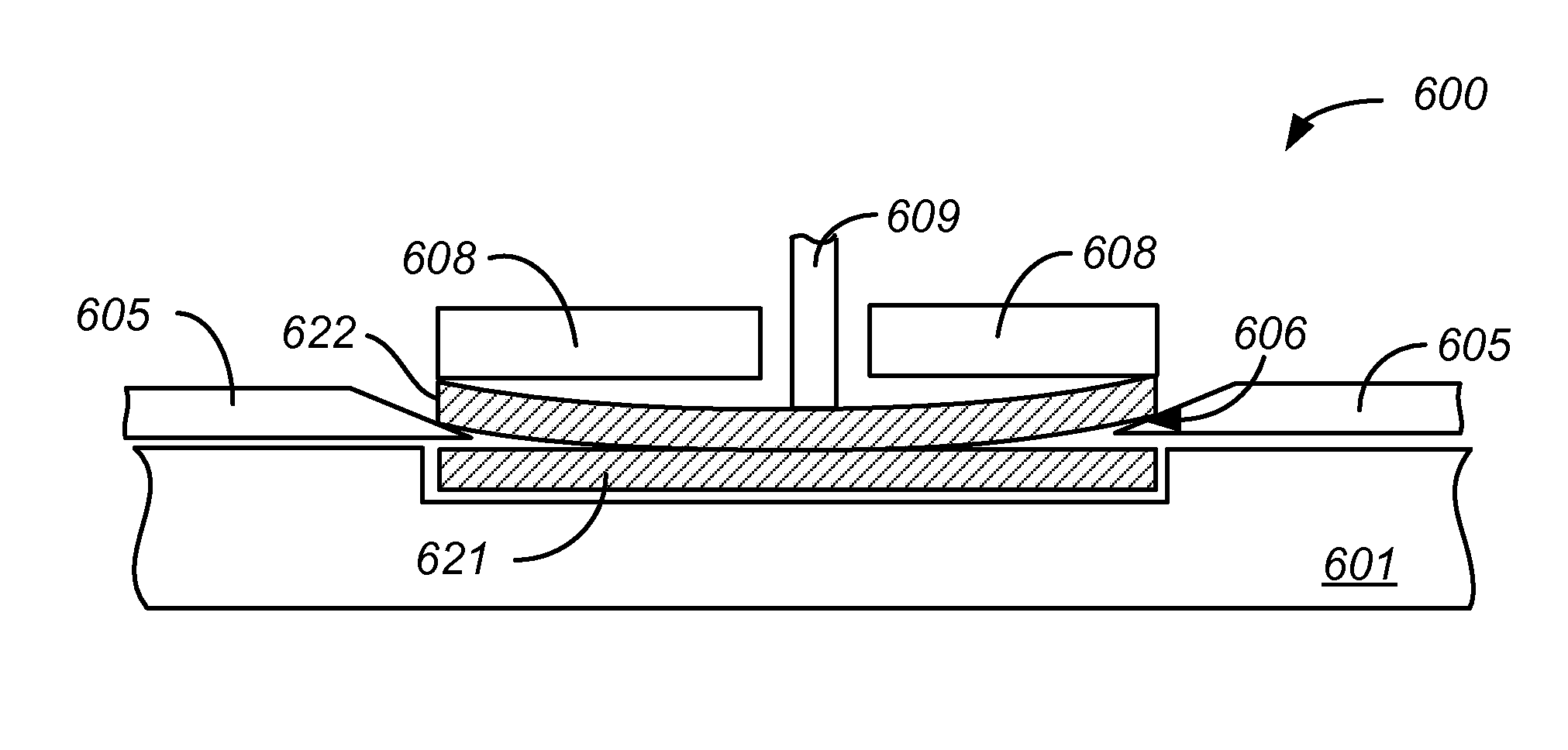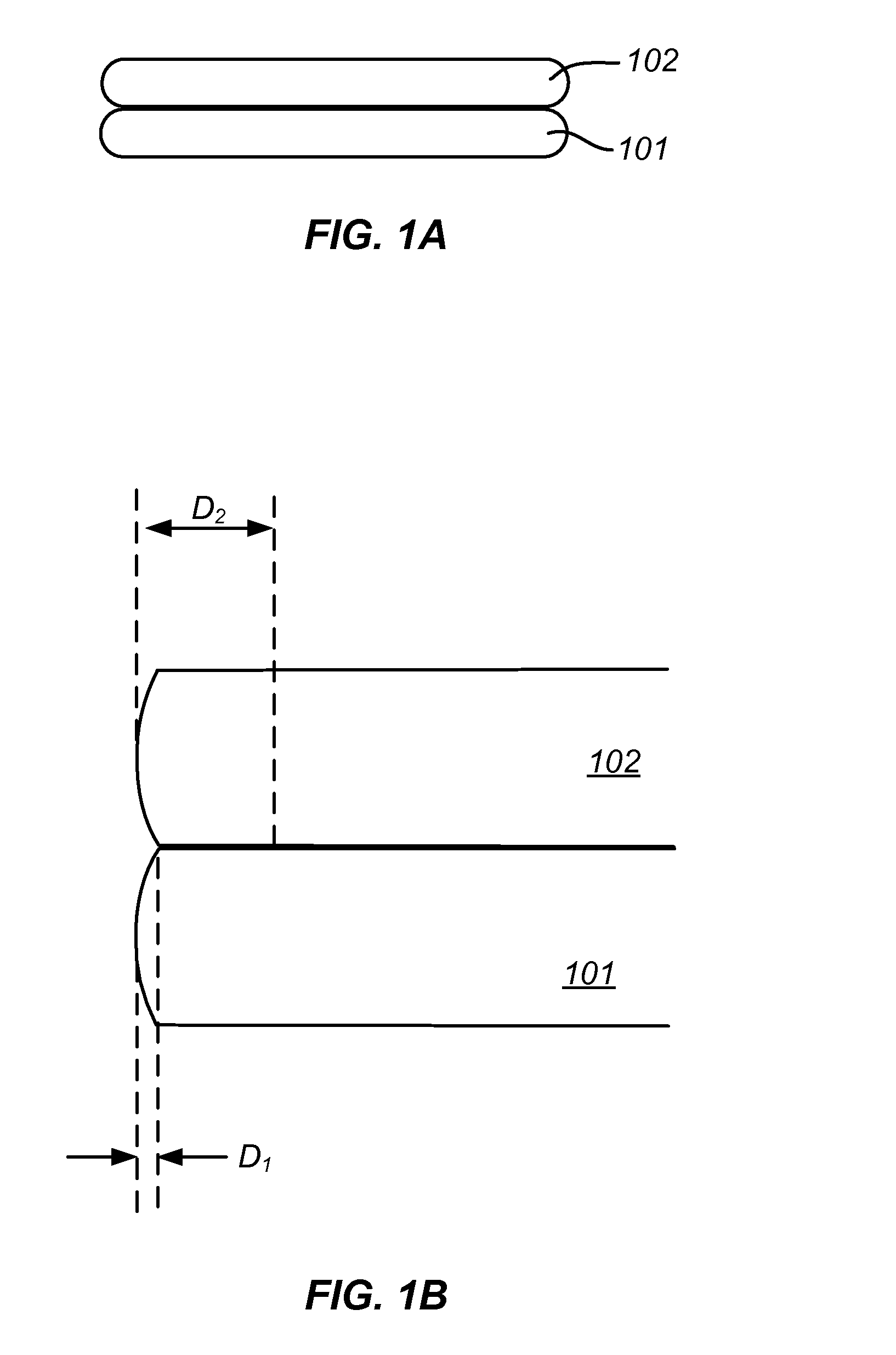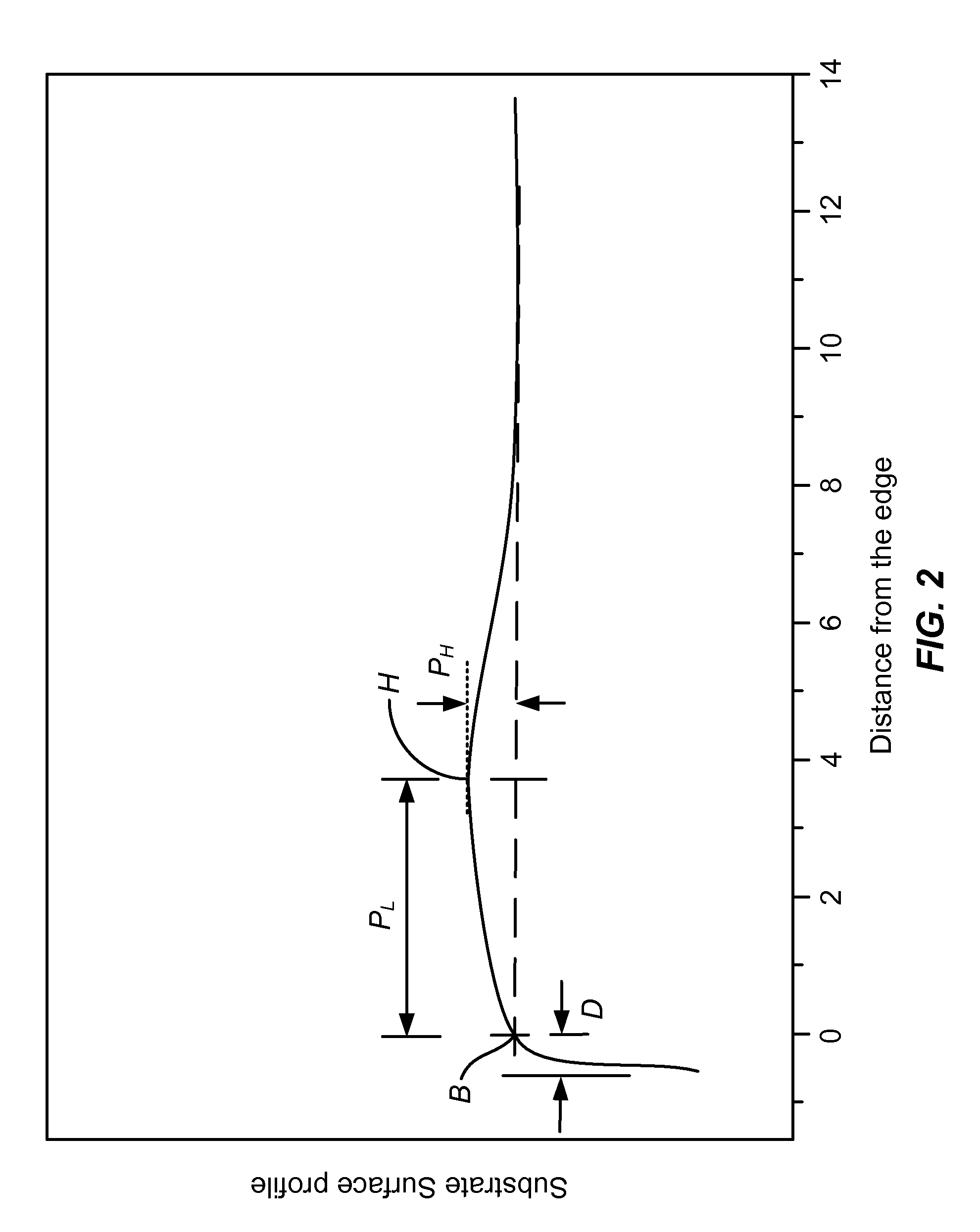Method and apparatus for bonded substrates
a technology of bonded substrates and substrates, applied in the field of methods and apparatus for forming bonded substrates, can solve the problems of undesirable non-bonded area, large non-bonded area at the periphery large non-bonded area of conventional substrate bonding methods, etc., to improve the quality of bonded substrates, reduce non-bonded edge regions, and simple and cost-effective
- Summary
- Abstract
- Description
- Claims
- Application Information
AI Technical Summary
Benefits of technology
Problems solved by technology
Method used
Image
Examples
Embodiment Construction
[0036]In accordance with embodiments of the present invention, a method for forming bonded substrates is provided. In one embodiment, the method includes determining a surface topographical characteristic that is related to the length of the non-bonded edge region, also known as the edge exclusion region, of bonded substrates. The method includes selecting suitable substrates according to the surface topographical characteristic. In another embodiment, the invention provides a method for forming bonded substrates by first forming a central contact between the substrates and then allowing the contact region to expand outward radially to the edge regions. Depending on the embodiments, edge exclusion regions in bonded substrates can be reduced using the methods provided in the present invention. In a specific embodiment, edge exclusion region as small as 1 mm in width has been obtained. Additionally, the invention also provides a simple and cost-effective apparatus for forming bonded s...
PUM
| Property | Measurement | Unit |
|---|---|---|
| length | aaaaa | aaaaa |
| characteristic length | aaaaa | aaaaa |
| length | aaaaa | aaaaa |
Abstract
Description
Claims
Application Information
 Login to View More
Login to View More - R&D
- Intellectual Property
- Life Sciences
- Materials
- Tech Scout
- Unparalleled Data Quality
- Higher Quality Content
- 60% Fewer Hallucinations
Browse by: Latest US Patents, China's latest patents, Technical Efficacy Thesaurus, Application Domain, Technology Topic, Popular Technical Reports.
© 2025 PatSnap. All rights reserved.Legal|Privacy policy|Modern Slavery Act Transparency Statement|Sitemap|About US| Contact US: help@patsnap.com



